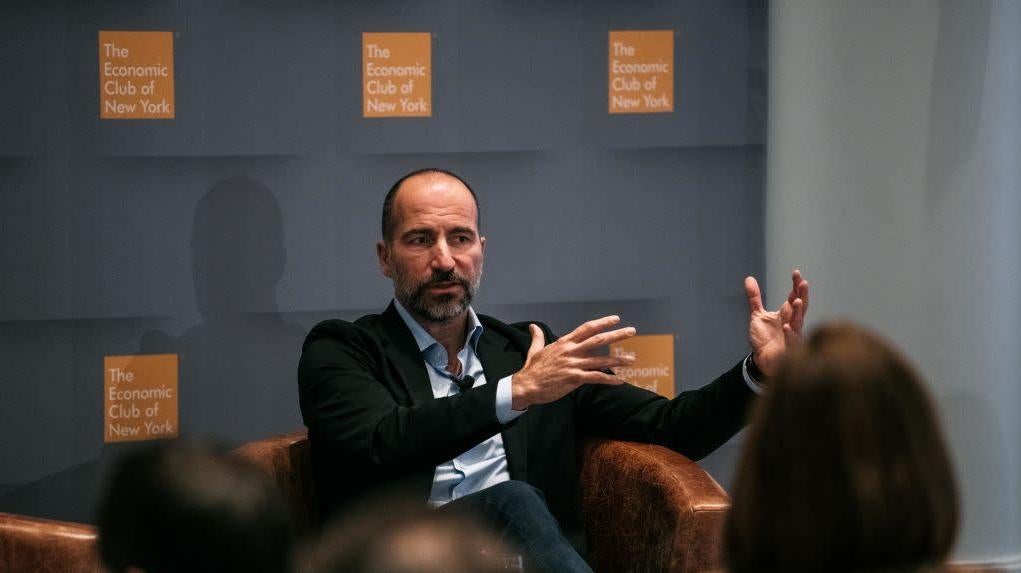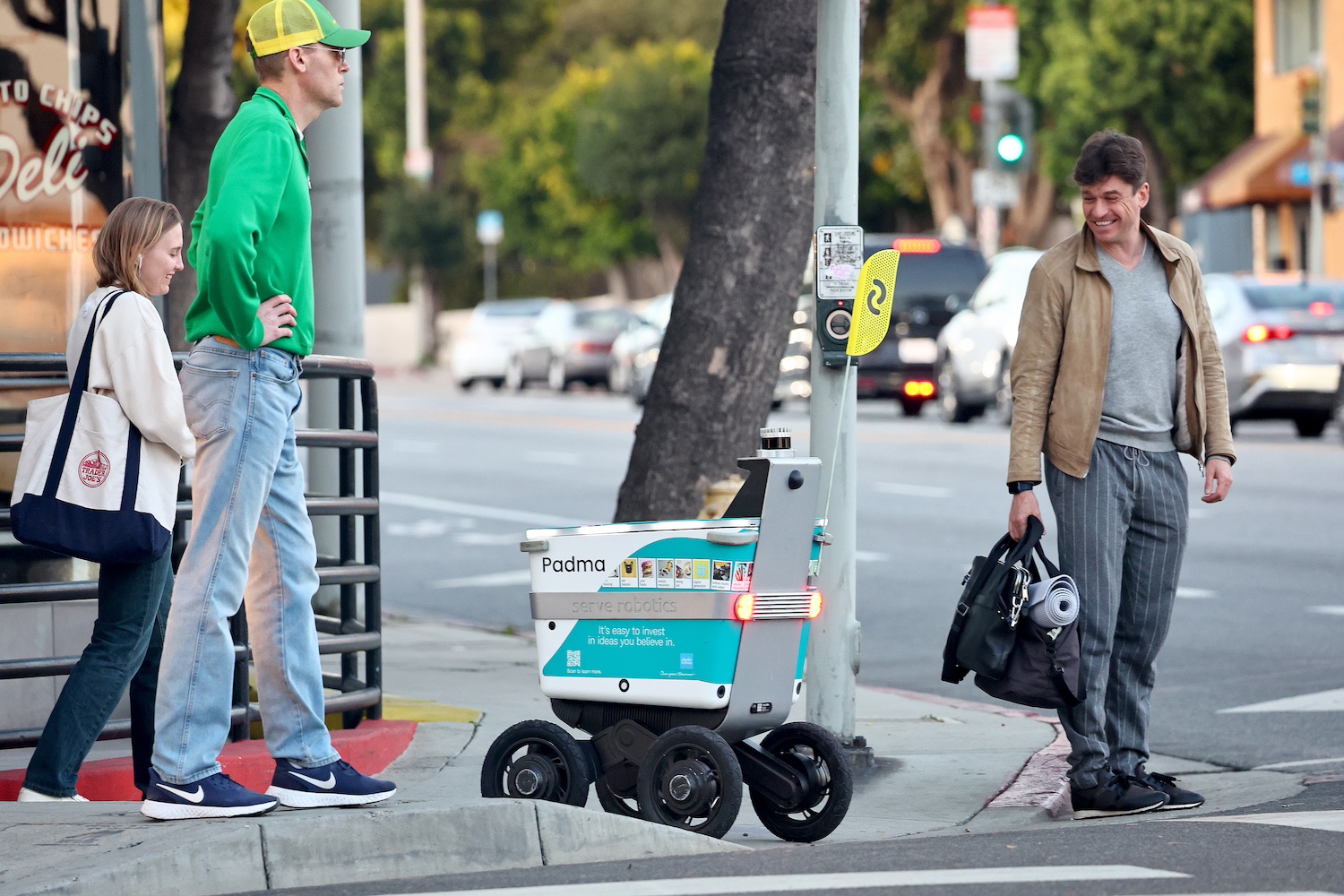It’s been said that, despite a robust transit system, all New Yorkers do is complain about the subway. This is true! We like complaining. But every bit of bile stored for the next unplanned service outage is nothing compared to the gallons of piss and vinegar that should deservedly be poured onto the MTA’s pilot plan to formally augment their own fleets with those of Uber, Lyft, or some other hostile corporation.
The short version, as reported first by The City, is that projections show outsized job growth for New Yorkers keeping non-traditional work schedules and locales, which means a shift in transportation needs among residents.
“With increasing numbers of people moving away from the traditional 9-5 Manhattan-centric work schedule, we want the MTA to evolve to best support New York’s continually diversifying economy,” MTA Chief Innovation Officer Mark Dowd said in a press release this afternoon—and, as the agency’s request for proposals (RFP) states, “during the night, some bus routes do not operate or operate very limited services.” For the purpose of the pilot program, which is slated to kick off this June, the MTA wants transportation network companies (or TNCs—like Uber, Lyft, etc.) and fleet owners to focus on areas outside Manhattan that are over half a mile from a subway stops and have little or no overnight bus service.
So to summarize: We’re talking about a cab that takes you to a train.
Because this pilot program for subsidizing late-night cab rides is still in the very beginning stages—stage one proposals from companies aren’t due for another two weeks—there’s no estimate for what this little fling will cost nor what these TNCs stand to gain. But really, any amount of money is too much! Undermining the usefulness of mass transit is the heart and soul of these businesses. And you can take that directly from their own financial statements.
“Our success depends in part on our ability to cost-effectively attract new riders, retain existing riders and increase utilization of our platform by current riders. Our riders have a wide variety of options for transportation, including personal vehicles, rental cars, taxis, public transit and other ridesharing and bike and scooter sharing offerings,” Lyft wrote in an S-1 ahead of going public last year. Put more bluntly by Uber, also ahead of its disastrous 2019 stock market debut, “we believe that our growth depends on a number of factors, including our ability to […] reduce the costs of our Personal Mobility offering to better compete with personal vehicle ownership and usage and public transportation”
So sure, the MTA offering a suckable teat to its sworn enemies is unwise. Counter-intuitive, some might say. Outright stupid might be a description others could use. The last fizzling thought of a diaper-brained geriatric about to pass on from this life into the hell that only exists for people terrible at city planning. You get the idea.
Uber did not respond to a request for comment. “Lyft is committed to encouraging the use of public transit, which is why we partner with transit agencies and put transit information into the Lyft app. We’re glad that the MTA is seeking partners to increase access to transit in the region,” a company spokesperson told Gizmodo, though they declined to say whether Lyft had or planned to participate in this particular bake-off.
On background, MTA spokesperson Aaron Donovon told Gizmodo that the pilot program wasn’t an agency idea, but an obligation determined by the state legislature—one which will be paid for via the Outer Borough Transit Account, a slush fund that’s already drawn ire for opacity and use in projects of questionable mass transit value.
There’s always one more thing, though. And in the case of the so-called Late-Shift Shared-Mobility Pilot Program, the One Thing is an opportunity to, I guess, test the interoperability of the MTA’s new OMNY program: an over-engineered NFC replacement for the cheap, simple swipe cards that currently get people through subways turnstiles. (“Oh boy, I can tap my phone to pay for getting to work,” zero New Yorkers exclaimed.)
Yup! One of the “success criteria” of this pilot is to increase usage of the MTA app, which currently sits at #72 in the ‘transportation’ category of the Apple App Store—below nearly every rideshare, bikeshare, homeshare, hotel, cruise ship, airline, and car rental app, and just barely under the official app for New Jersey Transit. Ouch.
“MTA requires that ultimately trips in the MTA Late-Shift Pilot Program are booked and paid for out of the MTA app and MTA OMNY customer account,” the RFP states, before mentioning that, well, OMNY might not be totally ready in time and also some people don’t have phones or bank accounts so maybe just figure the whole thing out later. (Metrocards are being decommissioned by 2023, according to the MTA. Nothing to worry about.) In any case, Uber and Lyft have been increasingly soaking up data on mass transit (and reverse engineering it), so I can’t imagine anything will go wrong there either.
It’s been a journey, folks. But let’s get back to the core issue here, the problem that has the MTA flailing like a colicky baby without a life vest which somehow managed to enroll in an advanced aquaerobics class: There aren’t enough busses!
Does New York City have any sort of government institution tasked with handling busses, for instance where they go and how often? No?
We wish the future independent contractor conductors of the L train luck with their unionization efforts.
Updated with comment from Lyft & the MTA














